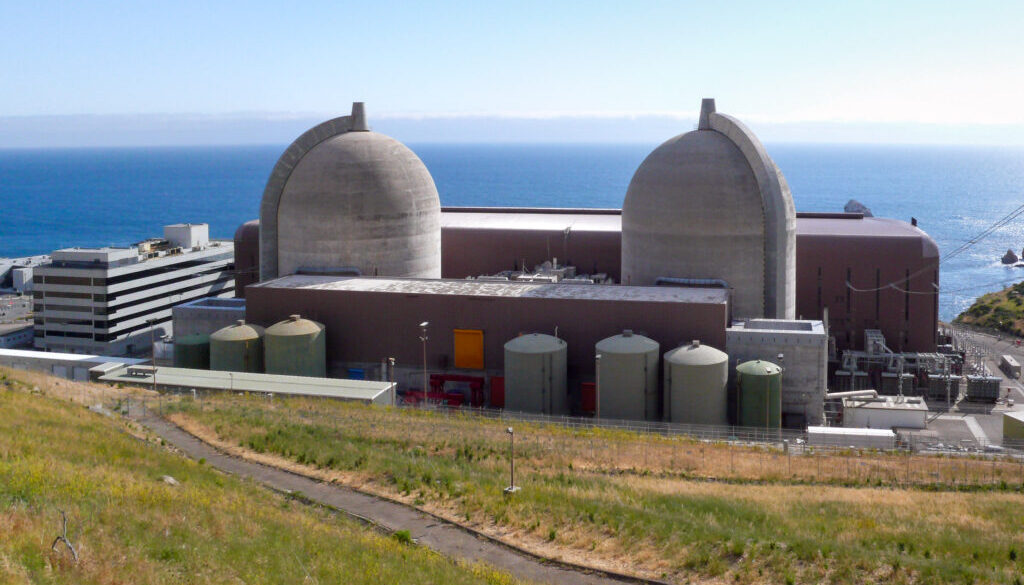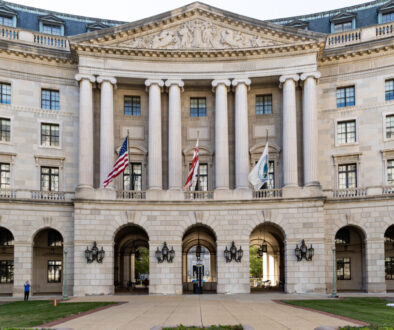Environmental groups ask court to reverse nuclear plant exemption
Regulators violated federal law in granting an exemption to keep California’s last nuclear power plant operating past 2025, when the 40-year-old plant was originally set to shutter operations, environmental groups argued in a court hearing this week.
The Nuclear Regulatory Commission (NRC) could only legally grant Pacific Gas & Electric Power Co. (PG&E), the plant’s operator, an exemption from a license renewal rule in the Atomic Energy Act if the agency expressed confidence that there was time to conduct environmental and safety reviews and to hold a public hearing before the reactors’ licenses expired, Diane Curran, counsel to the local nonprofit San Luis Obispo Mothers for Peace, told a three-judge panel hearing the case in the 9th Circuit Court of Appeals.
“If they don’t make that finding, they’re putting public health and safety at risk without justification,” Curran told the court. “The safety guardrails that the Atomic Energy Act puts on nuclear reactors can’t be just thrown out the window, which has happened here. The NRC has never abandoned its original finding that to operate a reactor past 40 years raises new and significant safety concerns that need to be addressed in the license renewal process.”
San Luis Obispo Mothers for Peace, Friends of the Earth (FOE) and the Environmental Working Group (EWG) filed a lawsuit against the NRC in June, alleging that the agency violated the Atomic Energy Act when it issued the exemption. The groups have raised concerns about safety issues at the Diablo Canyon power plant, including deteriorating equipment and earthquake risk.
The exemption allows the Diablo Canyon nuclear plant, which rests on the coast between Los Angeles and San Francisco, to operate after its licenses expire and while its renewal applications are being processed. PG&E filed an application with the NRC in November that would keep Diablo Canyon open for up to 20 more years. California’s public utility regulators last month approved a five-year extension for the facility, although the NRC alone is responsible for determining the plant’s safety and license.
In August, a California state judge dismissed on procedural grounds a lawsuit filed by FOE that sought to force PG&E to adhere to its 2016 pledge to fully retire the plant by 2025.
The groups want the 9th Circuit to grant their request for a review, reversal, and/or vacatur of NRC’s decision allowing Diablo Canyon to continue operating during the license renewal process.
The NRC disputed the validity of the groups’ concerns.
“It’s not the NRC’s position that license renewal happens at year 40 because the NRC has made a regulatory finding that the plants are unsafe at year 40 unless and until they receive immediate safety upgrades,” said NRC attorney Eric Michel.
Proponents of the plant argue that keeping it open can help California move away from fossil fuels and meet its power demands. Diablo Canyon can serve as a “bridge” to help the state transition its electrical grid as it moves towards its goal of operating with 100% zero-carbon sources by 2045, said Michael Kenneally, counsel for PG&E, which is an intervenor in the lawsuit.
California Gov. Gavin Newsom in a 2022 statement expressed support for a “limited term extension” of the plant to “support reliability statewide and provide an on-ramp for more clean energy projects to come online.” The Biden administration announced in 2022 that it would give PG&E a $1.1 billion grant to help keep Diablo Canyon open.
But keeping the plant open until 2045, as PG&E aspires to do, could cost Californians nearly $45 billion, according to an analysis published last summer by EWG.
(Featured image: Diablo Canyon Power Plant in 2008. Photo by By Tracey Adams, CC BY 2.0.)




